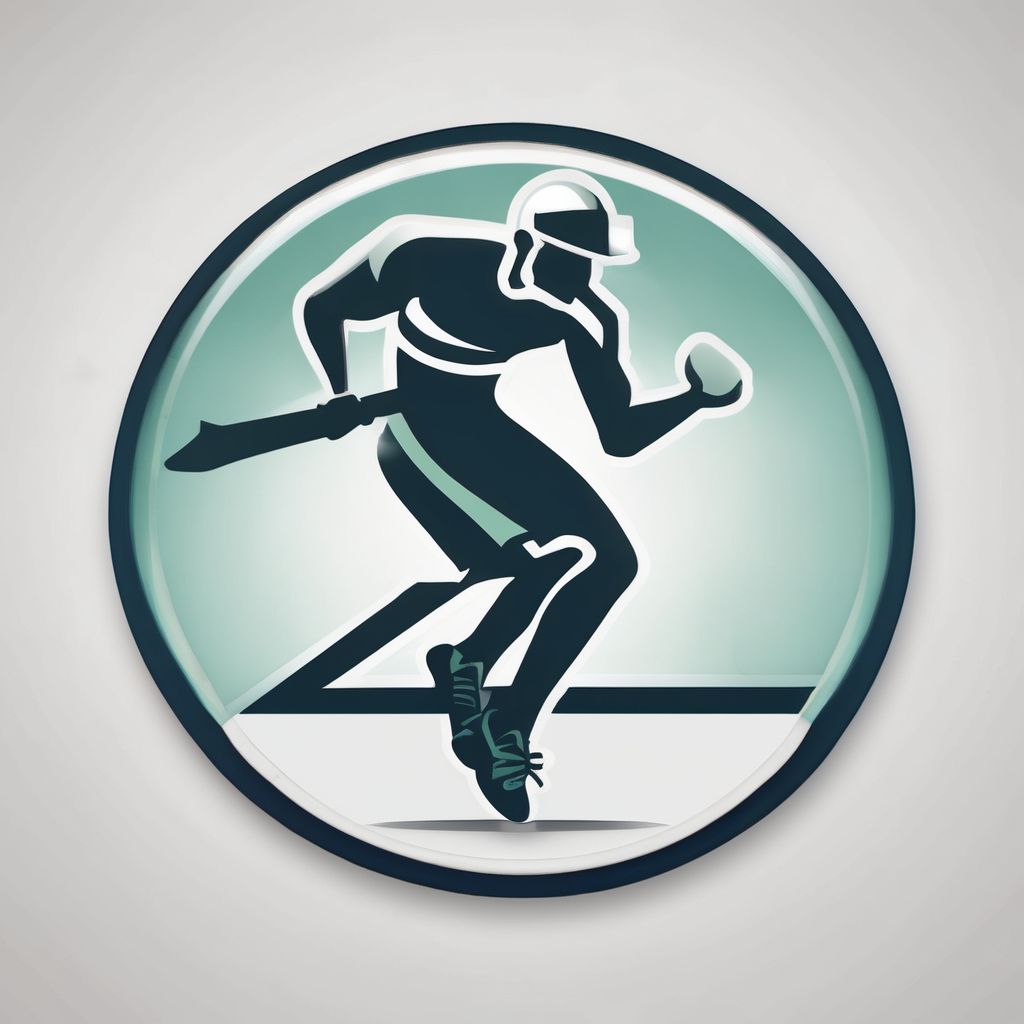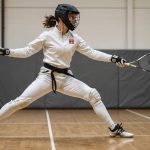Unlocking Agility: Specialized Training Drills to Boost Football Performance
The Importance of Agility in Football
Agility is a cornerstone of football performance, enabling players to swiftly change direction, accelerate, and decelerate on the field. It is the combination of speed, strength, and the ability to make quick decisions that sets top players apart. In this article, we will delve into the specialized training drills designed to improve agility, enhancing overall football performance.
Why Agility Matters
“Agility is the ability to change direction quickly and efficiently,” notes a sports performance coach. “It’s not just about being fast; it’s about being able to react and adjust your movement in a split second.” This ability is crucial in football, where players need to dodge opponents, chase down the ball, and make sharp turns to gain an advantage.
Also to see : Unlock Your Football Excellence: Top No-Gym Exercises to Elevate Your Game
Agility Training Drills
Agility training involves a variety of drills that target different aspects of a player’s agility, including speed, reaction time, and the ability to change direction.
Agility Ladder Drills
Agility ladder drills are a staple in many football training programs. Here’s how to incorporate them into your routine:
Also to read : Revolutionizing Football Training: Unveiling the Game-Changing Advantages of Advanced Turf Innovations You Need to Know
- Starting Position: Begin by placing a hexagonal exercise ladder on the floor.
- Drill Execution: Perform lateral shuffles, carioca drills (alternating feet in and out of the ladder), and high-knees runs through the ladder. These exercises improve foot speed and agility.
- Sets and Reps: Aim for 3 sets of 1 rep per side for each drill[1].
| Drill | Description | Sets & Reps |
|
|-----------------------------------------------------------------------------|
|
| Lateral Shuffle | Shuffle through the ladder laterally, keeping feet close to the ground. | 3 sets x 1 rep |
| Carioca Drill | Alternate feet in and out of the ladder, mimicking a zig-zag pattern. | 3 sets x 1 rep |
| High-Knees Run | Run through the ladder with high knees, emphasizing quick foot turnover. | 3 sets x 1 rep |
Cone Drills
Cone drills are another effective way to improve agility and speed.
- Setup: Create a box or zig-zag pattern using four to six cones.
- Drill Execution: Weave through the cones using different footwork patterns such as figure-eights, zig-zags, and shuttle runs.
- Sets and Reps: Perform 3 sets of 1 rep for each drill[1].
| Drill | Description | Sets & Reps |
|
|-----------------------------------------------------------------------------|
|
| Figure-Eight | Weave through the cones in a figure-eight pattern. | 3 sets x 1 rep |
| Zig-Zag | Run through the cones in a zig-zag pattern. | 3 sets x 1 rep |
| Shuttle Run | Perform shuttle runs between two cones, emphasizing quick changes in direction. | 3 sets x 1 rep |
Combining Strength and Speed Training
Agility is not isolated from strength and speed; it is often the culmination of these components.
Strength Training
Strength training is essential for building the power and endurance needed for high-intensity football games.
- Lower Body Strength: Focus on exercises like squats, deadlifts, and lunges to build leg strength.
- Upper Body Strength: Incorporate push-ups, pull-ups, and dumbbell rows to enhance overall body strength.
- Core Strength: Engage in planks, Russian twists, and leg raises to strengthen the core, which is crucial for stability and agility[4].
| Exercise | Description | Sets & Reps |
|
|-----------------------------------------------------------------------------|
|
| Squats | Stand with feet shoulder-width apart and lower your body until your thighs are parallel to the ground. | 3 sets x 8-12 reps |
| Deadlifts | Lift a barbell or dumbbells from the ground to hip level, keeping your back straight. | 3 sets x 8-12 reps |
| Planks | Hold a plank position for 30-60 seconds, engaging your core muscles. | 3 sets x 30-60 seconds |
Speed Training
Speed training is vital for improving acceleration and reaction time.
- Sprint Drills: Perform short sprints (20-50 meters) with full recovery between sets. This enhances acceleration and top-end speed.
- Hill Sprints: Sprint uphill to build explosive power and endurance.
- Resistance Band Training: Use resistance bands to perform resisted sprints, which can improve acceleration and deceleration[4].
| Drill | Description | Sets & Reps |
|
|-----------------------------------------------------------------------------|
|
| Short Sprints | Sprint 20-50 meters at maximum effort, with full recovery between sets. | 3 sets x 3-5 reps |
| Hill Sprints | Sprint uphill to build explosive power and endurance. | 3 sets x 3-5 reps |
| Resistance Band Sprints | Perform resisted sprints using resistance bands. | 3 sets x 3-5 reps |
Ball Control and Dribbling Drills
Agility training is not just about running through cones or ladders; it also involves improving ball control and dribbling skills.
Cone Dribbling Drills
- Setup: Place cones in a zig-zag or circular pattern.
- Drill Execution: Dribble the ball through the cones using different parts of your foot (inside, outside, sole).
- Sets and Reps: Perform 3 sets of 1 rep for each drill, focusing on maintaining control while changing direction quickly[5].
| Drill | Description | Sets & Reps |
|
|-----------------------------------------------------------------------------|
|
| Zig-Zag Dribble | Dribble the ball through a zig-zag pattern of cones. | 3 sets x 1 rep |
| Circular Dribble | Dribble the ball around a circle of cones, emphasizing ball control. | 3 sets x 1 rep |
Practical Insights and Actionable Advice
Incorporating High-Intensity Interval Training (HIIT)
HIIT involves short bursts of high-intensity exercise followed by brief periods of rest. This type of training can significantly improve agility and overall fitness.
- Example HIIT Session:
- Warm-up: 5-minute jog
- Sprints: 30 seconds of sprinting followed by 30 seconds of rest
- Agility Ladder Drills: 30 seconds of ladder drills followed by 30 seconds of rest
- Cool-down: 5-minute stretch
Focusing on Decision Making
Agility is not just physical; it also involves quick decision making on the field.
- Game Scenarios: Practice game scenarios where players have to make rapid decisions, such as reacting to a pass or intercepting the ball.
- Small-Sided Games: Engage in small-sided games (e.g., 3v3 or 4v4) to enhance decision-making skills in a dynamic environment.
Seasonal Training and Periodization
Training should be periodized to ensure peak performance during the football season.
Pre-Season Training
- Focus on Building Strength and Endurance: Use the pre-season to build a strong foundation of strength and endurance through strength training and high-intensity interval training.
- Incorporate Agility Drills: Gradually introduce agility drills to improve speed and agility.
In-Season Training
- Maintain Strength and Endurance: Continue strength training but reduce the intensity to avoid overtraining.
- Increase Agility and Speed Training: Focus more on agility and speed drills to maintain and improve performance.
Off-Season Training
- Recovery and Maintenance: Use the off-season to recover and maintain a basic level of fitness through lighter training sessions.
- Injury Prevention: Incorporate injury prevention exercises to keep the body resilient.
Unlocking agility in football involves a comprehensive approach that includes specialized training drills, strength and speed training, and a focus on ball control and decision making. By incorporating these elements into your training regimen, you can significantly improve your performance on the field.
As a football player, remember that agility is a continuous process that requires consistent practice and dedication. Here’s a final tip from a seasoned coach: “Agility training is not just about the drills; it’s about how you apply them in the game. Always keep your training relevant to the game scenarios you face.”
By following these guidelines and staying committed to your training, you can achieve peak performance and become a more agile, effective player on the field.





